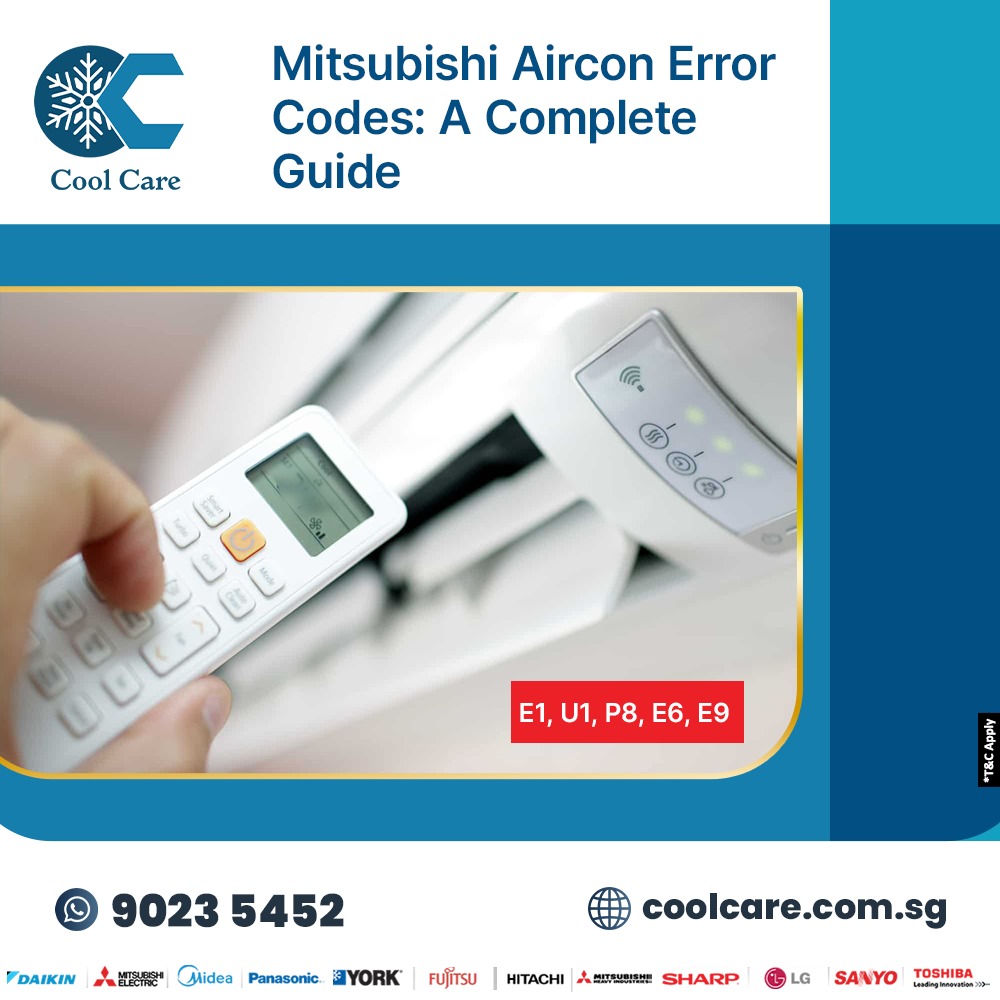
Mitsubishi air conditioners are known for their reliability and advanced technology, but like any other system, they may encounter occasional issues. These are often indicated by error codes on the unit’s display, which offer valuable information to diagnose and resolve problems efficiently. In this article, we’ll explore common Mitsubishi air conditioner error codes, their causes, and potential solutions to keep your AC running smoothly.
Mitsubishi Aircon Error Code
Mitsubishi aircon error codes alert users to various malfunctions. Each code corresponds to a specific issue, which can be identified and sometimes fixed without calling a professional technician. Knowing these codes can save time and money, especially when the solution is simple.
Common Mitsubishi Aircon Error Codes and Solutions
Let’s examine some of Mitsubishi air conditioners’ most common error codes and provide tips on troubleshooting them.
1. Error Code E1 – Communication Error
Cause: This error indicates a communication problem between the indoor and outdoor units. It could result from faulty wiring, a power supply issue, or an internal problem within the control board.
Solution:
- Ensure both the indoor and outdoor units have power and are properly connected.
- Check the wiring between the units for any visible damage.
- If the issue persists, contact a technician to inspect the control board.
2. Error Code U1 – Voltage or Power Supply Problem
Cause: This code typically signifies an unstable or insufficient power supply, which can interfere with the normal functioning of the AC unit.
Solution:
- Confirm that your air conditioner is receiving stable power by checking your main power supply.
- Avoid using multiple heavy appliances on the same circuit.
- In cases of frequent voltage fluctuations, consider installing a voltage stabilizer to prevent future issues.
3. Error Code P8 – Overheating
Cause: The P8 error indicates that the compressor may be overheating. This can be due to poor ventilation, dirt accumulation, or a faulty fan.
Solution:
- Ensure the outdoor unit has proper ventilation and is not blocked by debris.
- Clean the outdoor unit’s fins and fan to improve airflow.
- Schedule regular maintenance to prevent dust buildup.
4. Error Code E6 – Indoor/Outdoor Temperature Sensor Malfunction
Cause: This error points to a malfunctioning temperature sensor, causing inaccurate readings and improper cooling.
Solution:
- Reset the unit by turning off the power and then restarting it after a few minutes.
- If the issue remains, have the sensor inspected or replaced by a technician.
5. Error Code L9 – Compressor Lock
Cause: The L9 error occurs when the compressor cannot start due to mechanical issues or electrical faults.
Solution:
- Turn off the unit and wait a few minutes before restarting. Sometimes, a reset can resolve minor compressor issues.
- If this doesn’t work, call a professional to examine the compressor and related electrical components.
6. Error Code E9 – Drain Pump Malfunction
Cause: The E9 error suggests an issue with the drain pump, which could cause water leakage if left unresolved.
Solution:
- Check for clogs in the drainage line, which might be preventing water from flowing out.
- Inspect the drain pan to ensure it’s not overflowing.
- Clean the drainage system if necessary or consult a technician if the pump needs repair.
7. Error Code F1 – Outdoor Unit Fan Motor Issue
Cause: This error indicates a problem with the fan motor in the outdoor unit, which could lead to insufficient cooling and overheating.
Solution:
- Clean the outdoor fan to remove any obstructions or dirt buildup.
- If the fan motor appears damaged or fails to operate, a professional technician should inspect and replace it.
Troubleshooting Tips for Mitsubishi Aircon Error Codes
While some Mitsubishi aircon error codes can be resolved through simple steps, others may require professional help. Here are some general tips to handle error codes effectively:
- Perform a Reset: Many minor issues can be cleared by simply resetting the unit. Turn off the aircon, wait for a few minutes, and then turn it back on.
- Regular Maintenance: Regular cleaning and maintenance can prevent many issues related to dust buildup, overheating, and poor airflow. Schedule professional maintenance every 6-12 months.
- Check the Power Supply: Voltage irregularities or faulty wiring often cause system errors. If your area has frequent power fluctuations, consider installing a stabilizer.
- Refer to the Manual: Your Mitsubishi aircon manual can provide specific guidance for each model, including how to interpret error codes and when to seek professional help.
When to Call a Professional
While some issues can be managed with basic troubleshooting, others, especially those related to the compressor or internal wiring, require expert assistance. It’s best to consult an experienced aircon technician if:
- The error code reappears frequently, even after resetting the unit.
- There are unusual sounds or smells from the unit.
- The aircon fails to cool or functions inconsistently.
For accurate diagnosis and quality service, consider contacting an authorized Mitsubishi aircon service provider who understands the model-specific requirements and has access to genuine parts.
Conclusion
Mitsubishi aircon error codes are designed to help users identify and address common problems quickly. By understanding these codes, you can troubleshoot simple issues and know when to call a professional. With proper maintenance and timely attention to error messages, you can enjoy optimal performance and a longer lifespan from your Mitsubishi air conditioner.

